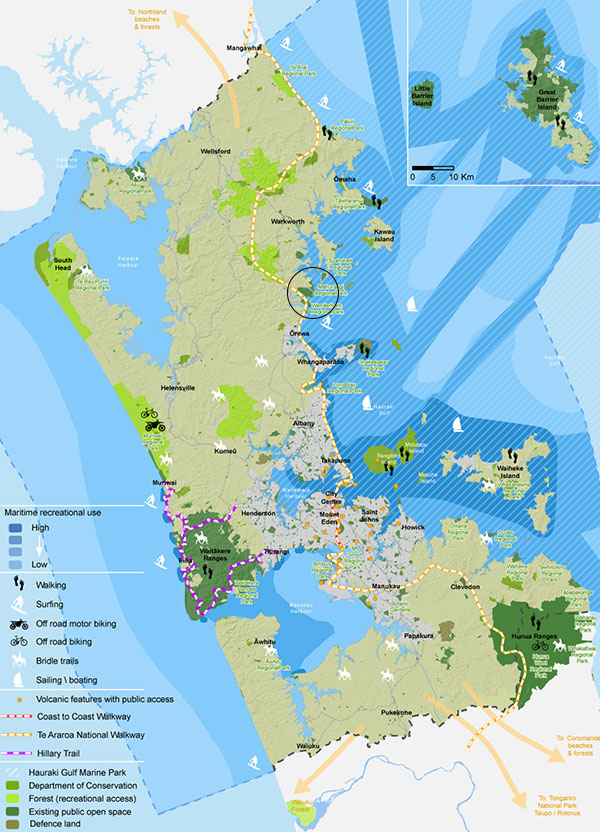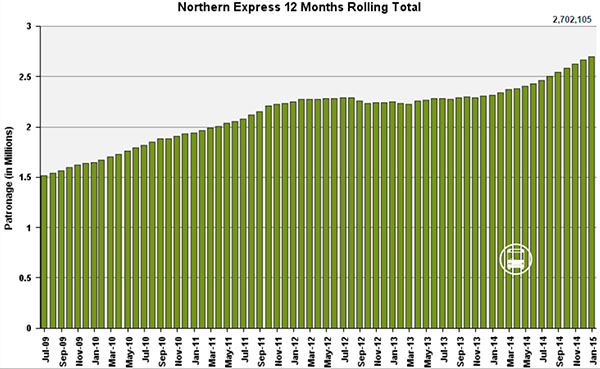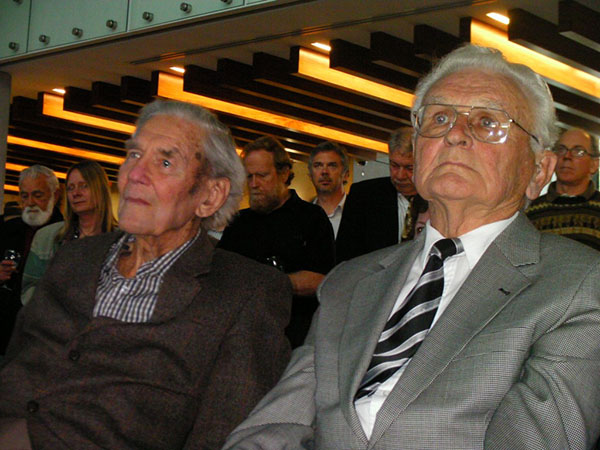3 separate vs one magnificent Mahurangi Regional Park

Amalgamation Atrocity: The Hūnua Ranges has an even larger area of contiguous regional parkland, by 1500 hectares, than the Waitākere Ranges. Bizarrely, however, in 2010 the boundary between Auckland Council and the Waikato regional council was allowed to split the Hūnua parkland in two, although, sensibly, the whole continues to be managed by Auckland. Observe that, even with the 407-hectare Peter Schischka farm added—it was somehow omitted from this May 2012 map—the combined Mahurangi regional parkland, circled, is made look miniscule by that of the mighty Hūnua and Waitākere ranges. map Auckland Council
Waitākere Ranges Regional Park is more than 19 times the combined size of the three Mahurangi regional parks.
Waitākere Ranges dwarfs the combined 900 hectares of the largely contiguous regional parks of Mahurangi, Te Muri and Wenderholm, including the 407-hectare Peter Schischka farm that was added in 2010, and the 17 000-hectare regional park is even larger than the Abel Tasman National Park was, when it was created in 1942.
An important part of the purview of the Te Muri Regional Park concept plan exercise will be to consider how the development of Te Muri impacts on its neighbouring parks. But rather than simply consider their impacts on each other, the three parks should be treated as one, and possibly not just for concept-planning purposes.
As things stand, a visitor to Wenderholm is given no clue that they are entering a 900-hectare area of regional parkland. Likewise a visitor to Sullivans Bay is not provided with the mind-liberating knowledge that the parkland extends all the way south to the Waiwera River. While the proposed Mahurangi Coastal Trail would do much to change that, rebranding the three parks that extend from Mahurangi Island, off Waiwera, to the Mahurangi Harbour, as Mahurangi Regional Park, would complete the linkage.
Even before the 2010 farmland purchase, the Wenderholm and Mahurangi regional parks were contiguous geographically, thanks to the 1973 acquisition of the Te Muri coastline. However, being separated by the substantial Pūhoi River, and there being no imminent prospect of a crossing, it made some operational sense to treat the parkland as two separate entities. Post the Schischka farm purchase, that expedient separation deserves to be reviewed. For three decades the community has made submissions begging for the adjoining parks to be considered as one, urging that:
The whole is greater than the sum of the parks.
But regardless of how long it takes for formal amalgamation to be considered, it behoves those grappling with a concept plan for Te Muri to think of the parks as one; to do less would be to do a profound disservice to the purchase of Wenderholm, 50 years one week ago.
The most obvious gains from joined-up regional parks thinking is the potential for the proposed Mahurangi Coastal Trail, and public transport, to reduce private-car pressure on Wenderholm and Sullivans Bay, and to simultaneously create the best-used section of Te Araroa by Aucklanders. By itself, the coastal trail could exacerbate pressure on Wenderholm and Sullivans Bay, with the majority of users adding to the demands on existing car parking available at those places. To avoid this will require a proactive approach to ensure that fresh, new ways of accessing the park are developed. This will not necessarily involve expenditure by Auckland Council. For example, Pūhoi River Canoe Hire has expressed interest in providing a service returning walkers to their point of origin, using its fleet of vehicles performing that role for their canoe-hiring customers. Walkers arriving at Waiwera by bus, for example, after walking to Te Muri to swim and picnic, could walk out of the park via the proposed Te Araroa ridge-trail to Pūhoi—for refreshments before being shuttled back to Waiwera to connect with the hourly bus service there.

On a Roll: The Northern Busway demonstrates that if public transport is more convenient than by car-clogged motorway, it will be patronised. In 10 years Northern Express passenger numbers have gone from zero to 2.7 million and climbing—patronage for January 2015, normalised, was up 26.2% on January 2014. If regional parks are to keep abreast of demand, and meet their responsibilities in respect to the reduction of greenhouse gas emissions, without which planning for future recreation needs is rendered moot, they, like the roads, must be optimised for people rather than cars. chart Auckland Transport
It is a fact that, currently, few regional park users make use of public transport even when it delivers them into a park, such as at Long Bay. But it is neither naïve nor futile to plan for greater access of regional parks by that means. The overnight success of the 4.5 million-passenger-per-year Northern Busway is proof that when it gets users to their destination quicker, and in reasonable comfort, public transport promptly becomes the preferred option. The key, of course, is that the busway prioritises the progress of buses, through their exclusive use of dedicated lanes, allowing them to sail past lane after lane of slow-moving private vehicles, in most of which the driver is the sole occupant. Elsewhere, bus riders are generally the ones made to feel like second-class citizens.
Regional parks, over a period of time, could be reconfigured so that those visitors who arrived by public transport became the ones receiving the first class treatment. They would be deposited handy to the prime areas, and those arriving by car, in contrast, would be required to park in areas in less demand for picnicking and other recreation, and walk to those more sought-after places. Even with areas provided for mobility parking, the net result would be to substantially increase the capacity of extant regional parks—more parkland for people; less for car parking.
At the Wenderholm entrance to a conceptual, integrated Mahurangi Regional Park, a shuttle could run between a bus station beside State Highway 17 at Waiwera, the Waiwera township, the Judge Arnold Turner Footbridge, and Wenderholm Beach. This is what Auckland Transport terms fourth-tier targeted services. It could be operated by Mahurangi Coastal Trail Trust volunteers, or by the owners of the Waiwera mineral pools and other local businesses, or by a combination of the interested parties. It could also dovetail neatly with Pūhoi needs and interests, to ensure that the proposed new section of Te Araroa, and the Mahurangi Coastal Trail generally, rapidly reached its potential.

Next Fifty Not Easy: Thanks to the vision and drive of Frederick Jones, Judge Arnold Turner, right, and his successor as regional parks chairman, Jim Holdaway, left, Aucklanders are set to celebrate the 50th anniversary a world-class network of large, natural open spaces. However, the next fifty years are going to be nowhere near as balmy, as the impacts of unfettered fossil fuel use increasingly bite, and civilisation is obliged to divide virtually all its resources between adaptation and never-to-be-as-cheap-again, zero-carbon, energy production. image mikelee.co.nz
If the development of Te Muri must wait for a $3 million upgrade of Hungry Creek Road and the Schischka farm track, it could be decades before the 2010 purchase of 407-hectare Schischka farm, for $15 million, gets to be enjoyed by the public. In contrast, the Mahurangi Coastal Trail, with its Judge Arnold Turner Footbridge built by public subscription, would have the new parkland put to good use within a few years.
Thinking of the three-contiguous-regional-parks-as-one is essential if the best possible potential of this still-small-by-Waitākere-Ranges-Regional-Park-standards park is to be realised. However, the thinking needs to go beyond the parkland that can be connected by the coastal trail, most obviously to include the Mahurangi Regional Park parkland on the eastern side of the Mahurangi Harbour—that at Scotts Landing and on the Mahurangi Peninsula. The coastal trail will provide a critical mass of walkers needed to make a Mahurangi Harbour ferry viable. This will open the way for a second Waiwera to Matakana link, the Scotts Landing peninsula, in addition to the Pūhoi–Pakiri route proposed by the Matakana Coast Trails Trust.
Longer-term, the joined-up parks thinking also needs to include Saddle Island and Motuora, adding a deeper, Hauraki Gulf dimension to the network. And to complete the picture, a long-overdue realisation of a ‘Mahurangi’ no-take marine reserve.
Whether or not Mahurangi, Te Muri and Wenderholm regional parks become known collectively as Mahurangi Regional Park, their constituent parts will still retain their own names. Wenderholm will still be named and known as Wenderholm, just as Scotts Landing and Sullivans Bay are.
What is of ultimate importance is that the 900 hectares of regional parkland functions as one magnificent Mahurangi regional park.
